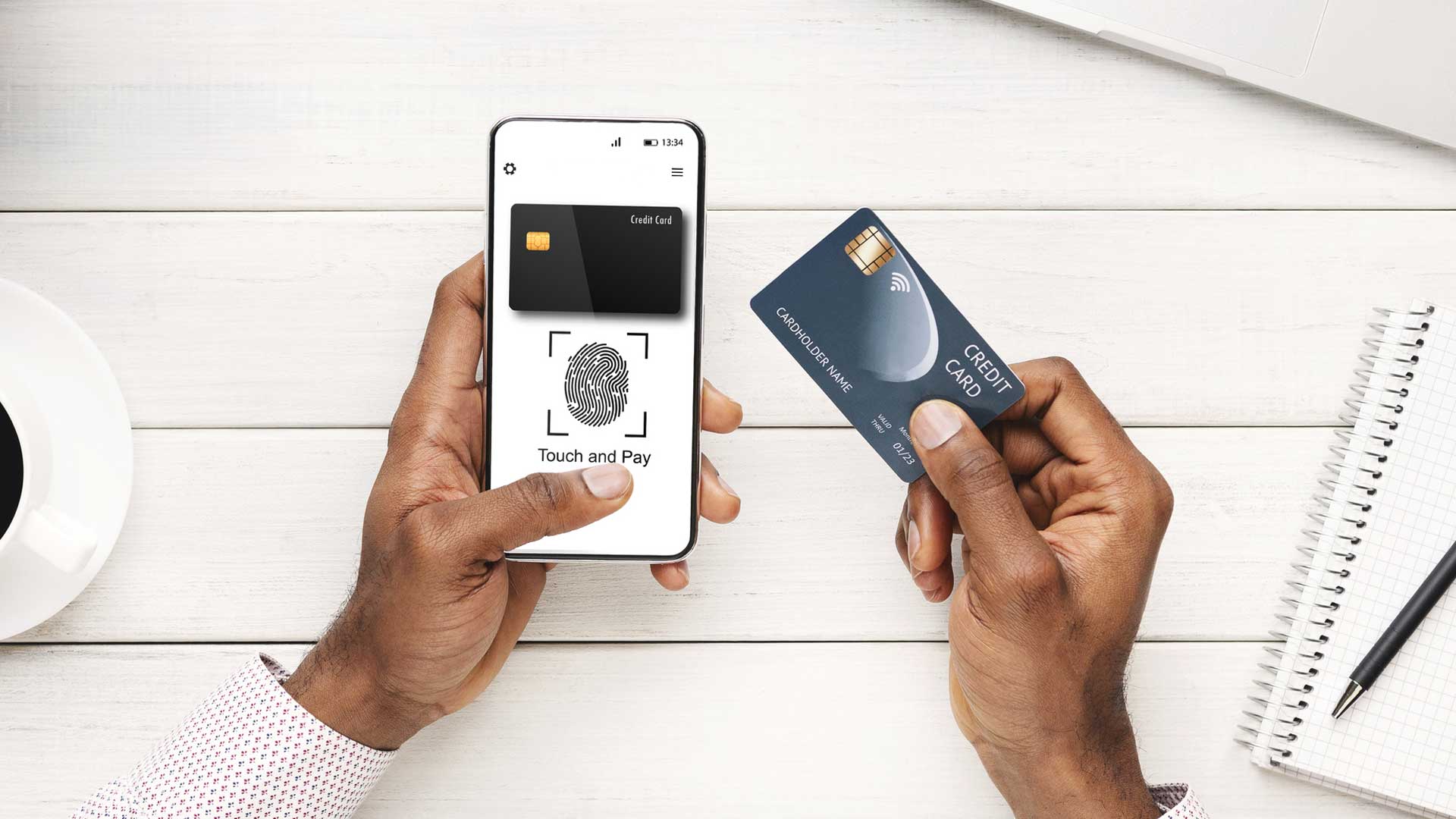Digital wallets are the new popular payment method on the block. Some say they could overtake contactless cards soon. Here’s all you need to know about digital wallets and why you should start accepting them before we reach the busiest time on our ecommerce calendars — Black Friday, Cyber Monday, and Christmas!
What is a digital wallet and how does it work?
A customer paying with a digital wallet is effectively the same as a customer paying with a credit or debit card.
Digital wallets store information for multiple cards — including credit cards, debit cards, and even store cards — on a password-protected, encrypted app on a smartphone or smart watch.
In order to pay for a product or service, the phone or watch is simply tapped if a customer is buying at a physical location and the purchase is below $200, or payment information is entered instantly by the digital wallet app if the payment happens online.
This results in a charge to the default or chosen credit, debit or store card — just like using that card in any other, more traditional way, like swiping it and signing, using chip and pin, or manually entering card information on an online marketplace.
How do online payments with digital wallets work?
Online, digital wallets can be used in many payment systems to automatically enter card details. There is little to no difference from the point of view of the business owner running the online store, but it’s incredibly easy for the customer.
In most digital payment gateways, e-wallets can be used like a card. Increasingly, though, merchants are adding quick pay buttons for specific digital wallets. These streamline the process even further, providing an almost frictionless payment experience for the customer.
What are the types of digital wallets?
The most popular digital wallets include:
Apple Pay
Apple Pay is the default digital wallet on Apple phones. With over 46% of new phone sales in Australia iPhones, a lot of Aussies are relying on Apple Pay.
If you have Apple Pay on your iPhone, it is incredibly easy to use, as you don’t even have to make an account. You can use it to make contactless payments with your iPhone, and it is protected by fingerprint ID as well as encryption.
Google Pay
Google Pay is similar to Apple Pay, but is available for both iOS and Android. It works alongside Google Wallet, which stores card info for online purchases and offers users the option of entering that info automatically.
Click to Pay
Unlike Google Pay and Apple Pay, which are primarily focused on quick contactless payment despite offering online solutions too, the main function of Click to Pay is making quick and easy digital purchases. This is achieved through storing customer card information. As a business owner and merchant, you can then install a “click to pay” button at checkout, which allows your customers to instantly use that information to make a purchase.
Click to Pay is simple to sign up to, requiring just an email address, phone number, and supported cards. It uses 3D Secure technology, which keeps both customers and business owners safe online.
Eway is already connected with Click to Pay, so merchants who use the Eway gateway can add a quick Click to Pay button to their payment page. There are plans to add Apple Pay and Google Pay to the Eway payment gateway soon, which should result in even more happy customers for the business owners who use our services.
What are the benefits of digital wallets?
Digital wallets have many benefits, some of them obvious, some less so.
They Offer Protection Against Fraud
Both making and receiving payments online can be daunting as the faceless nature of the transaction makes fraud and misunderstandings seem more likely.
In actual fact, though, advances in card technology mean that instances of fraud are dropping. This is especially true in card-not-present purchases (any purchase that uses card details but not the actual card).
Encryption Increases Safety
As a business owner, you have to be careful with any customer card details you interact with; digital wallets don’t change that. But digital wallets, with their strong encryption — in addition to the password or fingerprint protection and encryption of the devices on which they operate — actually mean that card details are, in general, much safer than they once were.
They Encourage Impulse Buys and Frictionless Purchases
Digital wallets, both online and in-person, allow customers to make small and medium purchases on a whim with ever-increasing ease. A card is never left at home or lost somewhere in a handbag. All card details are safely stored and can be accessed with a few taps!
That’s important when most millennials (and remember, everyone under 40 is either a millennial or Gen Z) carry less than $5 cash on them under normal circumstances. The easier you make paying for smaller items, the better.
Are digital wallets the payment of the future?
Over the past year, the average dollar value of purchases made with digital wallets by Aussies has risen from $41 to $44 for credit cards and $26 to $29 for debit cards. This indicates that confidence in digital wallets is rising and that they are more and more becoming the norm for many Australians. In fact, Australians are some of the most digitally savvy shoppers in the world.
Read more: An insider look into how Australians like to shop
Australians tend to be quick to pick up on new technologies and new payment methods. As digital wallets are more popular than ever, adopting this payment technology provides your customers with more options to pay. It also demonstrates that you as a business are up-to-date on the latest payment technology and trends.
Get in touch with us if you want to find out more about Eway payments and how we tailor our services to suit your needs.


Subscribe to updates
Get the latest news and payment insights from Eway hot off the press.



